Posts Tagged ‘Waterloo Region’
Posted on: August 29th, 2014 by Waterloo Region Crime Prevention Council
In 2009, the Kitchener-Cambridge-Waterloo census metropolitan area (CMA) had the highest hate crime rate in Canada, according to police reported statistics. Did you catch the end of that sentence? “…..according to police reported statistics”. It might seem insignificant, but it might be the key to understanding why the 2009 hate crime rate in Waterloo Region is so high compared to other CMAs in Canada.
A criminal offence against a person or property is considered a hate crime when there is evidence that the offence was motivated by hate, based on the victim’s: race, ethnic origin, language, colour, religion, sex, age, mental or physical disability, sexual orientation, or other similar factors. In 2009, in Waterloo Region, Police identified 93 crimes that fit this definition. While the number doesn’t tell us the nature of these reported hate crimes, these 93 situations represent the number of crimes that came to the attention of police that were classified as hate crimes in 2009.
But before we jump to conclusions about Waterloo Region being a hot bed of hate and discrimination, we might want to take a look at other cities and regions. St. John’s, Saint John, Barrie and Thunder Bay reported zero hate crimes incidents in 2009 and Saguenay, Trois-Rivieres and Greater Sudbury reported one hate crime incident each. When it comes to any urban centre, we can be reasonably confident that zero or one hate crime per year might have more to say about what comes to the attention of police and how it is classified than reality.
What we might conclude from the Census Metropolitan report in 2009 is that the reporting approaches are at this time too diverse to portray an accurate cross city picture. Comparisons between jurisdictions require similar reporting standards and such consistency did not exist in 2009. Thus, higher numbers might point to a more rigorous reporting and/or greater community attention to an issue.
By just looking at the numbers alone, Kitchener-Waterloo was put on one of eight worst places in Canada to move to for immigrants. This use of data without context was easy to share as a quick sound bite, but provided a woefully inaccurate picture of the community.
But the report is not fully useless by any stretch of the imagination. What we can and should do is use the data to compare hate crime rates over time. Such comparison works on the assumption that Waterloo Regional Police Service are more or less consistent in how they define and report hate crimes from year to year. On that basis Waterloo Region saw a steady decline in hate crimes from 93 in 2009, to 55 in 2010, to 41 in 2011 and 30 in 2012. That is a promising emerging trend. There is a BUT…
One hate crime is simply one hate crime too many. Crime prevention and the creation of a peaceful (read “inclusive”) society are intimately linked. And there can be no peace without inclusion. Understanding the nature of hate crimes in Waterloo Region should be a critical next step in our shared goal of creating a community that is safe for everyone. Armed with information about who the victims of hate crimes are, who has committed the offences, and what trends we observe overall provides us with data that can help us to begin to prevent these crimes.
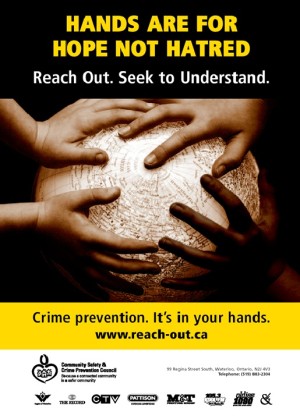 In 2012, the KW Multicultural Centre, along with numerous community partners developed a series of workshops designed to help community members better understand hate crimes, learn how to recognize potential hate crimes, how to help victims and what to do in the event of witnessing an incident that might be a hate crime. The workshop materials were designed in a way that those who completed it could deliver the workshop to other groups. To date, more than 15 workshops have been conducted in our community with over 250 people taking the training. These and other efforts help to raise awareness about the importance of hate crime prevention.
In 2012, the KW Multicultural Centre, along with numerous community partners developed a series of workshops designed to help community members better understand hate crimes, learn how to recognize potential hate crimes, how to help victims and what to do in the event of witnessing an incident that might be a hate crime. The workshop materials were designed in a way that those who completed it could deliver the workshop to other groups. To date, more than 15 workshops have been conducted in our community with over 250 people taking the training. These and other efforts help to raise awareness about the importance of hate crime prevention.
In an effort to do our part and continue the dialogue and problem solving, the Waterloo Region Crime Prevention Council recently released a RAP Sheet on Hate Crimes. The RAP sheet contains a number of suggestions on “what you can do” to address and prevent hate crimes. We are also committed to continuing to watch the data and educate ourselves by speaking to those who have lived experiences. Watch this page and our website for information we gather and for what we are learning. Also watch for how you can stay or get involved.
Meanwhile, we are keen to learn what you think! We are especially keen to learn what ideas you have to prevent hate crime before it happens.
Author: Anthony Piscitelli is Supervisor, Planning & Research with the Waterloo Region Crime Prevention Council. He collaborates on all research efforts published by WRCPC.
Posted on: July 14th, 2014 by Smart on Crime
This article appeared in the July 14, 2014 edition of the Waterloo Region Record.
What if you could save a life? Just one life. Would you? For almost all of us the answer to these questions is an enthusiastic yes. Without question, regardless of anything, a life, just one life, is worth saving.
But what if saving that person’s life tested your political standpoints around drug use? Would that life still be worth saving? Across this country people are dying from legal and illegal drug use. Reliable statistics on drug overdoses across Canada are difficult to find, but research by the Ontario coroner shows that on average there is an overdose every day in our nation’s capital and 33 people a year die from overdose in Ottawa. Clearly, people who use drugs along with their family and friends, come face to face with death all the time. But what can be done? How can we save people? One answer lies in the way emergency services respond when they receive drug overdose emergency calls.
If you were to witness a heart attack, you would call 9-1-1 without hesitation. You would not think of the repercussions of making that call – someone is having a heart attack and their life needs to be saved. Now try to imagine how this scenario changes: it is not a heart attack, it is a drug overdose. Our research, published in the most recent issue of the Journal of Critical Social Work , shows that people who witness overdoses think very hard about the repercussions of making that call to 9-1-1. Sometimes these repercussions are too great – people will hesitate or not call at all.
Fear of arrest weighs heavily on this life or death decision. People legitimately fear the police showing up, being criminally charged for drug possession, and for mothers, having their children taken away. All of these consequences anxiously whirl around in the panicked mind of a witness. What happens? Over half of the people surveyed do not make the critical 9-1-1 call. Some may try to help the victim themselves, which sadly can have dangerous consequences. Street remedies can often make the situation worse. The longer someone waits for medical assistance the more likely that a life will be lost.
So what can be done? How can we save people? One idea used in Vancouver is to limit police involvement in routine overdose calls. The theory goes, if you don’t send the police there is no reason to fear calling 9-1-1. Unfortunately, this solution won’t work in many parts of Canada. In many cities and most rural communities the police are often the first responder and those in the best position to save an overdose victim’s life. A more feasible, Canada-wide option is Good Samaritan Drug Overdose Laws. These laws protect overdose victims and someone who calls 9-1-1 from arrest for being under the influence, simple drug possession, and possessing drug paraphernalia. They do not protect people from serious offenses such as trafficking. Good Samaritan Drug Overdose Laws exist in several American states. Preliminary evaluation of Good Samaritan Drug Overdose Laws out of the United States show that 88% of opiate users are aware of the law and are more likely to call 9-1-1.
Making naloxone, also known as Narcan, available in every province without a prescription is also an essential piece of this puzzle. Naloxone can be easily administered and it temporarily counteracts the effects of drug overdose, providing precious time to get the person to the hospital. The Ontario Health Ministry recently introduced naloxone for public distribution and emergency responders watch in amazement as the compound saves lives.
Ultimately if we truly believe that every life is precious, then the answer is policy change. We need to reduce the barriers to calling 9-1-1 during routine drug overdoses by providing limited legal immunity through Good Samaritan Drug Overdoes Laws and we need to work on distributing naloxone across Canada, barrier-free. That life, that one life, would be saved.
If you ever are unfortunate enough to witness a drug overdose the correct course of action is to call 9-1-1, perform CPR if the victim has stopped breathing and administer naloxone if you have access to it.
Author: Kayla Follett is a Master of Social Work graduate, with the Newfoundland and Labrador Sexual Assault Crisis Centre. Her research on this topic was conducted during an internship with the Waterloo Region Crime Prevention Council, and was published in the July 2014 issue of the Journal of Critical Social Work (co-authored by Anthony Piscitelli, Michael Parkinson and Felix Munger).
Posted on: May 14th, 2014 by Smart on Crime
The conclusion of the InREACH project has been the topic of many well-intended discussions at all levels of our community but we haven’t yet moved to the point of integrating the lessons learned to ongoing or upcoming projects.
 On Friday April 11th, the Waterloo Region Crime Prevention Council hosted “Engaging Marginalized Youth: Harnessing Experience from the InREACH Project” to provide a space for a diverse group of community members – individuals, agencies and neighbourhoods that were involved in the InREACH project – to begin moving from idea to action. Our community learned some very rich and important ‘lessons’ from the inREACH project and the gathering was intended to help the community determine “where do we go from here”. A number of promising ideas were brought to the table, but when all the focus is placed on the next steps, we have a habit of overlooking the negative and possibly dismissing the barriers that inhibit successful implementation.
On Friday April 11th, the Waterloo Region Crime Prevention Council hosted “Engaging Marginalized Youth: Harnessing Experience from the InREACH Project” to provide a space for a diverse group of community members – individuals, agencies and neighbourhoods that were involved in the InREACH project – to begin moving from idea to action. Our community learned some very rich and important ‘lessons’ from the inREACH project and the gathering was intended to help the community determine “where do we go from here”. A number of promising ideas were brought to the table, but when all the focus is placed on the next steps, we have a habit of overlooking the negative and possibly dismissing the barriers that inhibit successful implementation.
It’s easy to assume that we should apply what we’ve learned from the inREACH project to better support marginalized youth in our community. But have you every stopped to wonder, what happens if we ignore what we’ve learned? What if we shed the rose-coloured glasses and donned the shades of pessimism to see the barriers that stand in our way? What if we tried to see the glass half empty? How can we make a problem like street gangs in Waterloo Region, worse?
Well, let’s see…
- Never discuss inREACH again
- If you absolutely have to discuss inREACH, hold meetings at inaccessible locations when only few people can attend, and only invite individuals who have the power to tie up discussions with bureaucratic process
- Do NOT, under any circumstances, collaborate or foster relationships with other youth serving organizations because it just makes things messy
- Scrap the evaluation and stick it on a shelf. Treat it like it is only the opinion of the evaluator anyway and discredit it
- Speak FOR the youth; adults and service providers know best. Youth are just too young and don’t know what they want
- If anyone asks you about inREACH, only talk about the numbers – how many youth participated, how many completed, etc. Don’t tell the personal stories of change
- Cut funding for youth programs and foster competition over limited remaining resources…. Better yet, just close the services
- Ensure that the remaining youth services only exist in silos and it is really difficult for youth to access them
- Never convene collaborative opportunities for our community to talk about improving our services
- Burn the rest of the inREACH posters and brochures so the program is effectively erased from our collective memory
- Don’t recognize the contributions of all youth in our community and only hand out awards to those that excel at everything
- Use only images that stigmatize youth
- Keeping focusing on the closure of inREACH as a sign that we can do nothing more for youth
Are you getting the picture? Are you thoroughly depressed by the very thought of these ideas?
I’ve used a technique here called ‘reverse brainstorming’ (with some dramatic effect), to emphasize how ridiculous it would be if we ignored what we’ve learned from inREACH and along with it, the potential for positive change. But the important thing here is that it’s not too far fetched if we really do nothing with the gift of what we’ve learned through the inREACH project. The reality is, our region is a growing community and is very close to larger urban centres. We need to keep a focus on prevention approaches so that street gangs do not become a larger problem in our community.
In a reverse brainstorming exercise, those involved would take each spine shivering negative option and flip it to the positive. That is essentially what happened at the “Engaging Marginalized Youth” event but what to do with it? How do we bring all of these lofty suggestions and grand themes together to collaboratively apply the lessons of InREACH? What can we base our practice on?
While the community is working to shape the next phase of work work with marginalized youth, I offer this resource as food for thought. WRCPC has found the work of Tom Wolff, community psychologist, to be inspiring, grounding, and effective in establishing collaborative practice. He presents six principles of collaboration (Wolff, 2010):
- Encourage true collaboration as the form of exchange
- Engage the full diversity of the community, especially those most directly affected
- Practice democracy and promote active citizenship and empowerment
- Employ an ecological approach that builds on community strengths
- Take action by addressing issues of social change and power on the basis of a common vision
- Engage spirituality as your compass for social change
With these six principles in mind, how can we revisit the reverse brainstorming activity above and critically challenge ourselves? Are we using these principles above in our process of applying and disseminating the lessons of InREACH? We can develop our practice to include marginalized youth. inREACH showed us that. We would love to hear your suggestions and thoughts for next steps either through comments below or during future meetings.
If you’re interested in reading more about the “Engaging Marginalized Youth” event, a summary of the event discussion & next steps is available. WRCPC will do its part in continuing the discussion and they are looking to the community to take further leadership. For more information please contact the Waterloo Region Crime Prevention Council office, by email or telephone, 519.883.2306.
Author: Ryan Maharaj, MSW Student with WRCPC. Ryan recently moved to Waterloo in pursuit of his Masters in Social Work at Laurier University. Placed at the Crime Prevention Council, he has been given the opportunity to explore the role of male allies in the movement against sexual and intimate partner violence. He firmly believes that with respect, support, compassion, and education we can prevent the occurrences of sexual violence in the next generation.
Posted on: April 10th, 2014 by Smart on Crime

My path in crime prevention started almost 20 years ago; my formal path that is. But, even prior to that, my work with those who were marginalized and/or victimized was also “crime prevention”. I just didn’t know it then. I certainly didn’t call it that. I know better now!
Justice goes well beyond the walls of courthouses and prisons to the heart of citizen capacity and imagination. In a way, justice lives in a tension between security and democracy. Security, of course, frequently uses methods to exclude certain people from certain places. Democracy, on the other hand, can be measured by the extent of our willingness and ability to include all people. Places where everybody matters, even those, or maybe especially those, who make us somewhat uncomfortable, are something to aspire to in democracy. But measures of security will often tell us the opposite. Herein lies the rub. And it is often no more obvious than in our interventions with youth.
Throughout time youth have caused us some discomfort. Not because of whom they are, but because of the associations that have been created between youth and crime. How we treat those who are in that critical transition between childhood and adulthood is an essential measure of the character of our community. How we interact with youth, how we express ourselves to and about them, says so much about us. It may not actually have a whole lot to say about them.
“We must learn to work for young people but also with young people. Our society must learn to trust them and avoid generalizations which stigmatise them, or portray them as potential criminals. The challenge to us all is to guarantee the legitimate right to safety of each and every person without discrimination and the scapegoating of youth.” (European Forum on Urban Safety, 2000).
It is good news then that progress often seeds itself in grounds of dissonance. Discomfort can be an opportunity for growth and learning if we only allow it to be.
inREACH was a golden opportunity. It brought discomfort in so many ways that we can only be grateful. We got to test assumptions about youth generally and street gang prevention specifically. We ended up rocking our boat of easy answers.
I am no expert in crime prevention. I have searched high and low for such person and have yet to find one. I am certainly not it. There are no bumper stickers in crime prevention no matter who brings them to you (and sometimes those who bring them have formidable power). The issues of crime, youth crime and street gang related crimes are immensely complex. They defy convenient truth. Sure, it is true that there is solid evidence to suggest that some children and youth are a greater risk of coming in conflict with the law. There is also solid evidence to suggest that this can be prevented. It would therefore make a whole lot of sense that we invest more in preventing children and youth from becoming involved in crime than we do in warehousing them through their teenage and adult years. But such sustained commitment to community safety can only thrive in an environment that distinguishes facts from fiction. And few things seem to be as fraught with myth and fiction as youth crime.
And that was the whole point. inREACH was about learning what works not what we believe to work. And whenever we are on a learning path we will encounter screaming successes as much as fabulous failures. At inREACH we had to not only dispel the overused myth that connects youth and crime, we also had to dispel the myth of singular professional expertise, as well as the myth of being a community where inclusion and collaboration are always easy. We finally had to learn that outcome measures are an empty promise at the beginning of such journey.
What a gift!
And without the voices of youth and true efforts at inclusion that gift would not have been possible.
But “kids at risk” are not supposed to be engaged in shaping public policy; they are supposed to live at the fringes of the community – not on its stages. But we found that listening is a most powerful method for changing trajectories. Listening can begin to untangle the complex interplay of individual traits, family, community, and wider social supports. And when we listen we learn so much.
- We learned that risk factors do not follow a neat mathematical “1+1 = 2” formula. As much as one more risk can bring a person to the precipice of crime, so one resilience factor can stop him or her from falling off. This resiliency can be sparked by a significant adult who refuses to give up, a teacher with an eye not only to the irritating behavior but the roots of it, a school that deals with the social inclusion first and academics next, programs which assist stressed families by first and foremost meeting their essential needs of life.
- We also learned that we can ALL be essential partners in this quest for safer communities and civic vitality if we make the connection between basic needs (such as food and shelter) and meaningful engagement, sense of belonging and viewing others as opportunities not threats.
- We also learned that knee-jerk reactions, approaches rooted in fear, or a philosophy of blame are the greatest barrier to successful prevention.
In the never ending circle of seeking who is to blame we have become confused and numb to our own opportunities to be part of scripting a whole new story about us and the young people among us – ALL young people. In a way, inREACH was an opportunity to test our resolve to focus on prevention sometimes despite of it all. It was our opportunity to wiggle in discomfort as we sought out momentums for sustainable change.
The moral of the inREACH story is that no one system alone is equipped to deal with the complexity of gang related crime. We had to work in partnership. It was not a choice. Hats off to Dr. Spergel for saying all that so many years ago, long before we ever even conceived of inREACH. But “partnership” is not an old boys/girls club or tired relationship on auto pilot. Partnership is a vital agreements to work together, to share a vision, to establish a set of values, to be held collectively accountable, to disagree, and disagree some more, but to never stop moving forward together. Partnership does not end at the board room doors but rather moves us into the heart of the service we provide. That was the task we set for ourselves and it was a difficult task indeed.
The confession that easy answers are little else than a distraction from the larger social and community roots goes hand in hand with the invitations to citizens to overcome such psychology of learned helplessness. Learned helplessness is the outcome of a gradual but persistent chipping away at our collective confidence that anything can be changed let alone that we can be part of that change agenda.
Ask most people what to do about crime and at first they reach for the 911 dial. Give them the opportunity to recognize the power of everyday action and they can rally together in a way that goes beyond our wildest imaginings. The neighbourhood mobilization work of inREACH exemplified that more than anything I have ever seen. From parents to teachers to artists; when we merged the stories of those in social services with the stories of everyday citizens and those with lived experience, a comprehensive plot emerged in which truly everybody mattered.
Too often have we developed services first and the asked why. In this “we know what is best for you” mentality we often even maintain programs out of tradition, not because they worked. Such skewed problem solving is, at least in part, the outcome of organizational distance to the people we serve. inREACH youth came up very close and personal. And we were and are richer for it.
Some answers of convenience are not wrong in and off themselves. They are just wrong by way of their omissions. inREACH youth had a voice and in hearing that voice we designed an approach that was rooted in their reality even if it wasn’t always popular or comfortable. In helping them to break their silence we had to face our own fear of contempt, censure, judgement or lack of recognition. But in the words of Audre Lorde: “The fact that we are here is an attempt to break the silence and bridge some of the difference between us, for it is not differences which immobilize us but silence”.
I so look forward to tomorrow. Tomorrow is our chance, free of the confines of funding (yes there is freedom in not being funded) to again amplify the voices of those who live and lived it, and those who had the courage and wisdom to live it with them.
In the end, it is up to all of us to say: OK! We hear you! Now what?
Author: Christiane Sadeler is the Executive Director of the Waterloo Region Crime Prevention Council.
Posted on: April 7th, 2014 by Waterloo Region Crime Prevention Council
Before inREACH ended in December 2013, I shared 5 important lessons learned from the inREACH gang prevention project with the Waterloo Region Crime Prevention Council. While project funding has ended, some parts continue and there is much to be learned about addressing youth gang involvement in our community for the future. Here are some highlights.
1. What are your assumptions and values?
We need to ask ourselves this central question – what are the fundamental assumptions and beliefs we have about the young people we work with? Do we feel people are broken and need to be fixed? Or – do we believe people are full of capacities and if supported correctly, they can realize their potential? I’m not saying people don’t come with their problems, but the question is what are we focused on because that informs how you do the work. It took us a while to get this right. This idea was expressed well by a youth participant:
“It’s…for us, run by us and gonna involve all of us..What do you want to see in your community, and what are your personal talents or anything that is special to you that you want to show everybody else, and maybe those people might like it too right? So- opening new opportunities. It’s not just to keep kids off drugs but for under-privileged kids, kids who may have never had a chance to be part of something like you know…discover their love of art…so it’s giving everybody a chance to actually do…the things they want to do, so that’s why I started coming.”
This is powerful because it’s raising the bar. It’s not just getting youth out of the gang – but getting them into a job or back in school and even realizing some of their hopes and dreams. If you believe that people are full of possibilities – then the work is geared more to helping people realize that potential versus simply preventing them from doing something.
2. Gang Prevention Is:
- addressing underlying issues
- not about getting a kid to take off the bandana
We often heard – “we’ve got this kid, he’s in a gang – fix him.” So often in our case management and system navigation work, it wasn’t about getting this young person to take off his bandana or to stop hustling or whatever, we never approached the work in that fashion. But it was about the underlying issues and working on them. Mostly we were dealing with issues of poverty, untreated trauma, family breakdown, substance abuse, disengagement and lack of opportunities. These are the problems that young people and gang members and people in general are dealing with. We want to demystify that label of gang member that says their needs are different than any other groups. These same issues are the drivers behind the behaviours.
3. Gang prevention is:
- increasing engagement and inclusion
- working at individual and community levels
Young people demonstrated so clearly that they WILL engage. This matters because pro-social relationships and connections are essential for preventing youth from participating in gangs.
Unfortunately, adolescents and young adults are much less involved in community activities than other groups, particularly those experiencing marginalization due to where they live or challenges they face. Researcher Mark Totten says “there is an epidemic of social exclusion in Canada.” inREACH very successfully supported young people’s inclusion and engagement, in community centres, recreation, school, employment, services and more. This is a promising way to build assets and address risk factors in a holistic and non-stigmatizing way. However, it wasn’t just about engaging individual youth. The community was also mobilized and systems needed to make some changes in order to be more inclusive.
4. inReach is an example of an effective hub model
inReach is a comprehensive wraparound hub model demonstrating an effective way to support young people. It was comprehensive because all the right supports, services, staff and organizations were involved. It was a mobile hub which was key for meeting young people where they’re at – whether at the office, Tim Horton’s or their home. Dedicated multi-disciplinary teams brought diverse skills to the work and learned strategies and skills from each other. It was not done at a desk.
5. You Need The Right People On The Bus
You need to have the right people and organizations involved in the project and that was really key to the success of inREACH. People have to be there for the right reasons, share the same vision and be able to check their egos at the door. It can’t just be about what’s good for your own organization. Collaboration requires a thoughtful discussion before you bring people on the team. Everyone involved with inREACH was fully invested and went above and beyond because they were passionate and believed in it.
The community should be proud of all that it has accomplished.
Co-authors: Dianne Heise & Rohan Thompson – Dianne Heise is the Coordinator of Community Development and Research with the Waterloo Region Crime Prevention Council and worked with the inREACH project while she was a Master of Community Psychology student at Wilrid Laurier University. Dianne also worked on the final evaluation of the inREACH project with Dr. Mark Pancer (WLU).
Rohan Thompson was the Project Manager for the inREACH Street Gang Prevention Project (2010 – 2013). At the end of the project, Rohan returned to his role with the City of Kitchener.
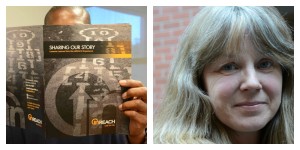
Rohan Thompson (L) and Dianne Heise (R)
Posted on: April 3rd, 2014 by Smart on Crime
Alison Neighbourhood Community Centre is neighbourhood-based organization that works with volunteers to support residents who live in the Alison Neighbourhood in East Galt, Cambridge. We support residents, families, children & youth by offering after school programs, youth drop-in programs, community events, family outreach services, and volunteer opportunities.
As a member of the Waterloo Region Crime Prevention Council and as community partners of a couple of the InReach project host sites, we were able to hear about some of the wonderful opportunities to which the youth were exposed as a result of InReach that they would not have experienced otherwise.
How InReach Resonated with the Work We Do
- We too, focus on building on strengths and capacities of young people
We have worked with youth who have great dreams and aspirations for the future, but have trouble putting their vision into a workable plan. On the other side of the coin, we have worked with youth who have little to no confidence in their abilities, thus requiring a little more encouragement and a little more trial and error in determining what really gets them motivated and excited.
In our experiences, many youth have difficulty simply picking up a new hobby as a means to divert themselves from more harmful and negative activities. Let’s say a young person decides to try something new: Inspired by an Instagram pic of a friend of a friend’s cousin rock climbing out West, Andrew decides he wants to give it a try. A few initial barriers come to mind: Other than that distant personal connection, he doesn’t know anyone else who rock climbs, he doesn’t know where he would go to rock climb, and has no idea what is needed to get started. How much is it to join? Do you need a membership? What type of equipment is needed? Does that cost more money? The idea is now overwhelming. For a youth who has not had many life experiences nor opportunities, it is likely that these questions wouldn’t even be on their radar. It is much easier to continue along their existing path, wherever it may lead.
In our experience, the recipe for youth engagement is as follows:
- Exposure to a new activity must take place in an accessible space where youth feel safe, where they won’t feel like they are being judged and feel comfortable to try, fail, and then try again
- In order for this to happen, relationships must be built with program staff. And in order for this to happen, staff must be skilled in outreach and community development practices so that they can effectively meet the youth where they are at before they will even walk through your door
- Youth need to be involved in the planning process and have input and control over what happens next
- It takes time, commitment to seeing the initiative through, trial and error, one-to-one support, and constant encouragement to ensure that youth are getting the most out of the program.
Bottom Line: You cannot expect certain youth to simply sign up for an activity, attend regularly, and thrive without support, a trusting relationship and input into the program’s design and execution.
- We have learned to adapt to the growing complexity of the needs and issues of youth
We offer programming for youth under the guise of recreation. When I first started working in the field, I had a very pretty picture in my mind about what the harmonious world of recreation should look like: Mom or Dad would drop off their kid for our program, (on time), sign-in would be completed in an orderly and organized fashion, and we would all participate in an rousing round of basketball. At programs end, the youth would depart safely for the evening and everyone would be so happy. I hope you can smell the sarcasm here, because this picture couldn’t be any further from our reality. On paper, we offer programs such as Teen Night, Basketball, Girls Night, etc. In reality, we offer mentorship, leadership development opportunities, a place to belong and be heard, support and guidance, a respite from family and relationship trauma, something to eat, relief from the stresses of coping with depression and anxiety, an escape from the pain and constant disappointment of poverty, an opportunity to practice speaking English, access to individualized supports such as counselling, emergency food sources, career resources, addictions supports, relationship and grief therapies, and the list goes on and on. Ultimately, by the time we have a chance to check in and talk to everyone who was fortunate enough to even arrive to the program, there often isn’t time to play basketball.
- We need help keeping programs like these going so that we can reach more youth
Just because the InReach project is now “complete” doesn’t mean that there still isn’t more work to do. With as many partners, staff, support agencies and youth impacted by InReach, I hope that the trajectory of this valuable project will not be lost and its lessons forgotten. The truth is, there are thousands of youth living in the Waterloo Region that could really benefit from a community treatment team; a one-stop-shop where youth can access support to face a combination of issues (see above) unique to only them, right in their own neighbourhoods. Effectively addressing these issues takes partnerships, patience, commitment, resources- all things that that the InReach project so successfully exemplified.

Author: Courtney Didier is the Executive Director of Alison Neighbourhood Community Centre in Cambridge. She is very passionate about creating sense of community and inclusion, not only in her neighbourhood, but across the Waterloo Region. Courtney is expecting her first child any day now!
Posted on: April 2nd, 2014 by Smart on Crime
Being an avid hockey fan, I await the joys of the upcoming Stanley Cup playoff run. But with this expect many interviews, with standardized questions with the same responses from each player. The questions never change based on a given answer, and the answers never change from game to game, and year to year for that matter. They are all cliché based interviews. How is this relevant to inREACH?
Having been with inREACH, it became quite evident, that the youth we worked with often experienced clichés in their lives. They were labelled, stereotyped, and their behaviours were often predicted by the adult world around them, yet most of the time no one knew anything about them. Outside of where they lived, or who they hung out with, or the school they went to, or perhaps what they look like, do many even know these youth? The label which is the umbrella they live under is their cliché.
While working with inREACH, the approach we used broke down these barriers, the labels, the assumptions. That is what worked. Did we listen to them? No; we heard them. We can use our own clichés about giving hope, opportunity, a chance, but it only works if we know what to give. That was done by hearing their story. Their story does not have to be a given. It is not just about where they have come from, and what they are going through, it is also about where they want to go. If we hear them, we can help them. inREACH worked because no assumptions were made. Each youth had their own “Stanley Cup” they wanted to lift, but the battle to get there was the unknown. After each session or meeting with a youth, there were no cliché answers or questions. There was the concept of acknowledgement of ability, an identification of assets, and no reason to suggest why that youth could not raise that cup, whatever that cup was from him or her.
There was a time where we were asked to do a presentation on working with high risk youth on behalf of a community agency, and the reason for such information was the staff was stressed due to not feeling successful in working with this population. Initial feedback as to why the training was needed was the youth do not listen; they are always angry, disrespectful etc. Perhaps part of the issue is as adults, we make assumptions of where these youth have come from. This was a huge learning curve I believe many of us have yet to master.
Recently I watched the film “Short Term 12”, about youth in a group home, and a new staff member in the film was asked to say a few words to introduce himself to the group. His response was: “I always wanted to work with under privileged youth”. That comment didn’t go over very well. My first reaction was shock really, as the moment the categorization of ‘under privileged’ was used, any potential trust is already gone (as the youth were not too happy). The scene reminds me so much of what inREACH was about. Youth are…really….just youth. No adjective required. And really, I do think that is what is being missed. That point was driven home while with inREACH.
Often, we as adults rely on labels, as they are easy to work with clichés that fit into a nice little box for the ease of comfort.
In my continued work, I think it is of the upmost importance to truly find out what the youth needs, or wants, and feels. To reflect on what the youths’ words are, shows they have been respected, and valued, and heard. That is the start of their quest for their Stanley Cup.
Moving forward, what is my message? I won’t give any clichés here that you will assume I should be making now. What I will say, is do you know the path I took as a youth to get to where I am right now (working in social services for 14 years)? I will bet most likely not. I was a youth. We all were. That is the cliché I will end off on!
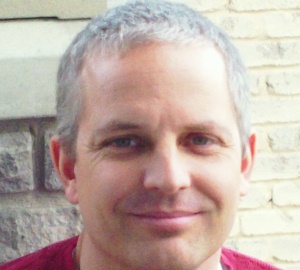 Author: Karl Garner I was a Case Manager at inREACH a focus on employment for the youth. I am currently working at John Howard Society with the Youth in Transition Program, a program for Crown Wards. And want to know a fun fact…? I still play my major passion every week…HOCKEY!
Author: Karl Garner I was a Case Manager at inREACH a focus on employment for the youth. I am currently working at John Howard Society with the Youth in Transition Program, a program for Crown Wards. And want to know a fun fact…? I still play my major passion every week…HOCKEY!
Posted on: April 1st, 2014 by Smart on Crime
I spent a couple years working as a Youth Outreach Worker with inREACH. I spent most of my time in the Preston Heights neighborhood and also in the Paulander community. I was part of the Community Mobilization phase of this pilot project and assisted the youth in running events/programs.(ie.. Art Studio, weekly youth drop-in, sports evenings, homework help group,..) Our approach with youth was very relational and strength-based. inREACH provided an environment that definitely steered us away from the traditional way of working with youth.
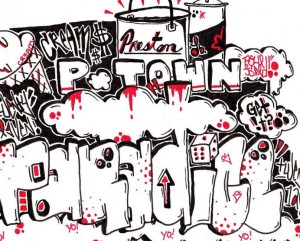 A big part of these two years was assisting the youth in opening a Youth Art Studio. This studio gave opportunities for at-risk youth to express themselves through the creative arts. It gave the youth a chance to engage in a new and healthy outlet to express their emotions, as well as cope with current and past adversities. I also assisted these youth in running their very first Art Show at a local gallery. Some sold their art, some made the paper; but more importantly I noticed a huge boost of confidence in each of the youth who took part in this.
A big part of these two years was assisting the youth in opening a Youth Art Studio. This studio gave opportunities for at-risk youth to express themselves through the creative arts. It gave the youth a chance to engage in a new and healthy outlet to express their emotions, as well as cope with current and past adversities. I also assisted these youth in running their very first Art Show at a local gallery. Some sold their art, some made the paper; but more importantly I noticed a huge boost of confidence in each of the youth who took part in this.
Over the years I always found the act of creating art a very therapeutic experience for the youth I worked with.
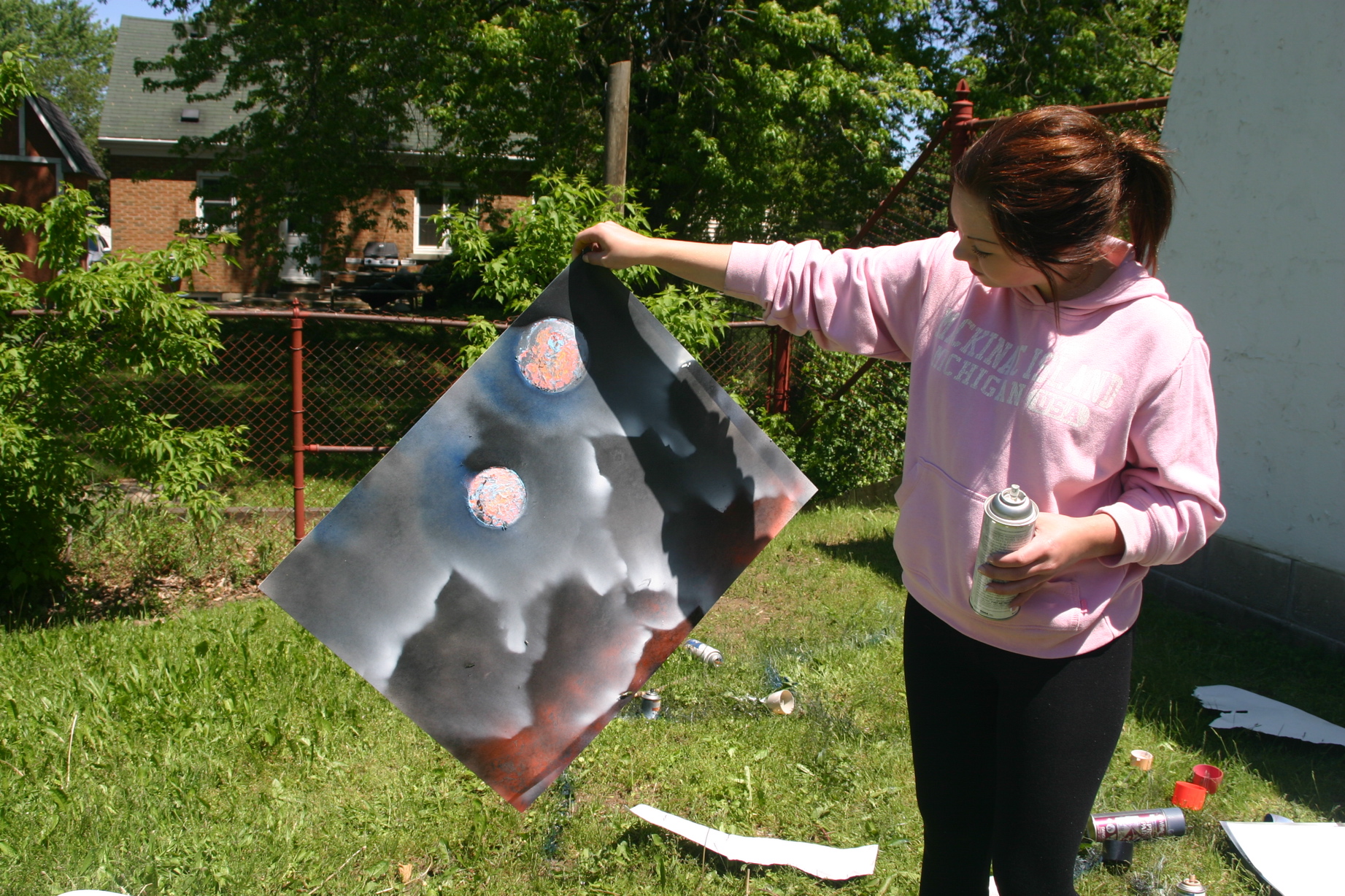
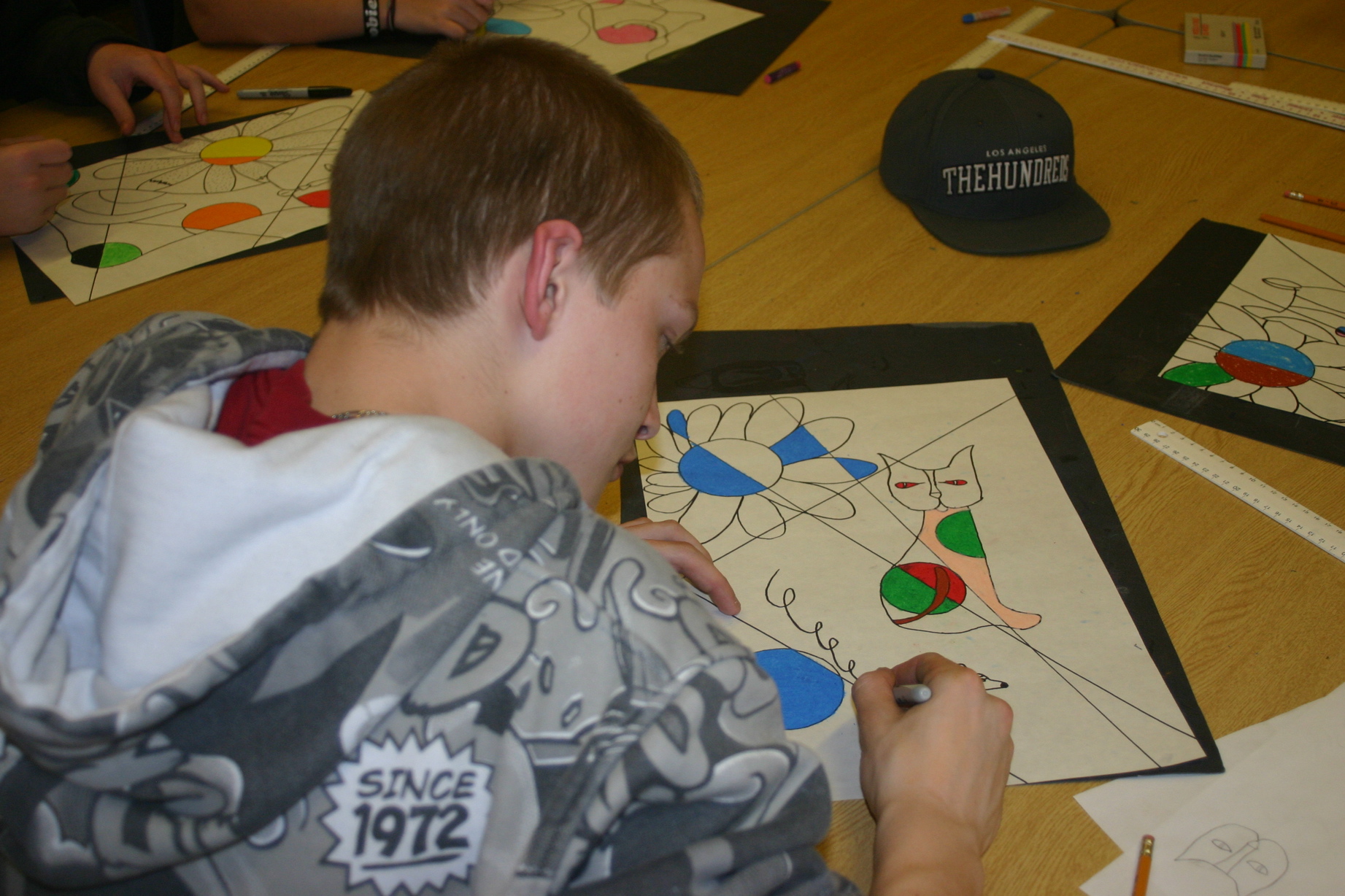
With inREACH closing due to lack of sustainable funding, I decided to start a for-profit business that would fund an Art’s program for at-risk youth. I started Art Innovators Waterloo Region. I hired a team of Art Instructors in the beginning of 2013, and we now provide after school/lunch time Art Programs in over 30 schools within 7 local School Boards. These programs are all parent paid. We also now run Art Camps, Corporate Team building Art Classes and Seniors Art programs. I use the profits from these programs to fund art programs for at-risk and disadvantaged youth.
I run programs in local alternative schools and youth shelters like Argus (males), Argus (females), Monica Ainslie Place, New Dawn, New Way, etc. I am even able to continue to connect with some of the youth I had worked with through the inREACH project. I am very excited to be running an art program with Community Justice Initiatives in a local Custody facility (GVI). I am also able to offer free scholarships to many families who cannot afford our Art Program in each of the schools we partner with. One of my free art programs starts next week in a Waterloo Region Catholic school in the Paulander Neighborhood.

I feel that my experience with inREACH had an important part to play in starting Art Innovators here in the Waterloo Region.
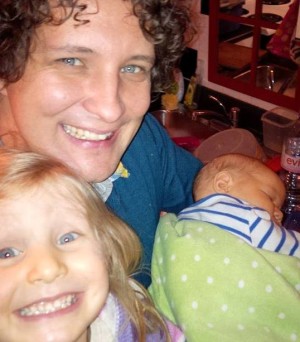 Author: Paul Field
Author: Paul Field
I am the middle child of 7 brothers and grew up in the country. I spent the last dozen years working in the Social Work Field in settings such as Schools, Group Homes, Rehabs and Youth Drop-in Centers. My passions have always been working with youth, travelling and creating Art. I am blessed with my beautiful wife Liana and two amazing children; Willow and Lachlan!
Posted on: March 31st, 2014 by Smart on Crime
My experience with the inREACH project began when the Community Mobilization team was formed. I was one of 4 Youth Outreach Workers, working primarily in the Courtland Shelley community as well as in the Paulander neighborhood, both in Kitchener. Our job as Youth Outreach Workers was to work within the neighbourhood to help make young people feel a greater sense of belonging and security within their community.
inREACH fostered a working environment that not only allowed us, but encouraged us to work outside of the box. I’d be lying to say the task was not daunting at first. In my previous experience working as a Youth Worker I had never been given such flexibility and confidence within a position to achieve the desired outcome; an outcome that was not based on the amount of programs ran or number of program participants but the ability to engage youth in their community. We were not given a method to do this; it was easy to see that each of the communities we worked in were uniquely their own. We were introduced to the Spergel Model to use as a foundation and approached our communities in a very strength based, relational approach.
What I appreciated most about working with inREACH, and what I have made a conscious effort to take with me in my work is the time we were given to establish relationships. I spent the first couple months getting to know and understand the community I was working in. I was given the flexibility to do this in many different ways. I spent time outside playing with the kids, going to adult classes or food distributions at the community centre, attending parent council meetings, sharing food with youth, and just hanging out in parks, the malls and parking lots. Any place I thought I might connect to the community I went. inREACH and my working agency, House of Friendship gave me the time to make my visual presence in the community known, and to establish trust and rapport with the youth and their families. Although there were days this time spent within the community did not seem valuable, it was undoubtedly critical to the success of working with the youth in these communities – taking the time to establish a solid relationship allowed for programs, education and training to be successful later in the project.
Through my experience at inREACH I also saw success in an alternative approach to programming. Many community agencies believe that after a certain age youth are not interested in being involved in their community or attending programming at a community centre. I myself have even been guilty of some of those thoughts, however after running strong programs I realize now that it is all in the approach. Creating successful, well attended programs began with the relationship that was formed between the youth and me in the first couple months of working in the community. Through this relationship I was able to discuss with the youth what types of programs they would like. Focusing on their strengths and interest, the youth were involved in the planning and implementation of the programming, right down to the days and times they thought would work best. This created a program that they had interest and ownership in. I also learned to allow the programs to change and be flexible. Programs that initially were successful became less attended and needed to change according to the youth and their needs. Our funding from inREACH allowed us to do many impactful things with the youth outside of their community. Although these things were very important I saw how programming within their community helped the youth to feel a sense of belonging and safety within their neighborhood.
I am pleased to say that the Courtland Shelley Community Centre continues to run youth programs established through inREACH. I have been fortunate enough to remain working at these programs and to sustain relationships with many of the youth I worked with through the project. House of Friendship allows me to continue using approaches that help to enhance my relationship with the youth and run programs that represent their changing needs and wants.
My experience with inREACH has been invaluable. Working with the project has strengthened my skills and competency as a youth worker. I am proud to have been a part of such a unique project that united so many community agencies in collaboration. The inREACH project may have ended, but I take with me inspiration from the youth as well as for the future of youth engagement in the Waterloo Region.
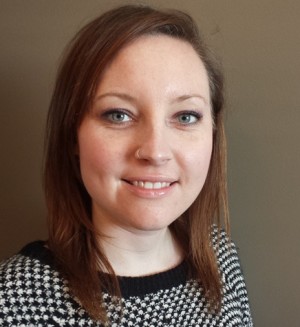 Author: Krista McCann
Author: Krista McCann
With an education in Child and Youth Counselling Krista McCann has spent several years working with marginalized children, youth and their families. Krista is dedicated to creating relationships and environments for youth to thrive.
Posted on: March 27th, 2014 by Waterloo Region Crime Prevention Council
I agree with the sayings – ‘there’s always more to learn’ and ‘it’s never too late to learn.’
I lived this out when I returned to university for a Masters degree the same year my daughter started university. Luckily she wasn’t too embarrassed to be at school with her mom. My timing turned out to be perfect for another reason as well. During my time in school I had the amazing opportunity to be involved with the research and evaluation of the innovative and highly successful gang prevention project, inREACH. I can guarantee you; I learned something new every day.
An excellent summary of the evaluation report for inREACH highlights a LOT of really important learning and accomplishments as a result of this collective community effort over the past few years. Sharing our story: Lessons learned from the inREACH experience describes how the project was implemented, the young people it served in the treatment and prevention programs, and the many positive impacts of the project on young people, neighbourhoods, organizations and the community as a whole.
 The most important lessons and understandings learned from inREACH will inspire community action toward a future where all young people feel part of a caring community and have the opportunities and the supports they need and deserve. But, any evaluation isn’t even worth the paper it’s printed on if it just sits on a shelf. We need to apply the evaluation findings so that we can affirm what might already work but also make changes where needed.
The most important lessons and understandings learned from inREACH will inspire community action toward a future where all young people feel part of a caring community and have the opportunities and the supports they need and deserve. But, any evaluation isn’t even worth the paper it’s printed on if it just sits on a shelf. We need to apply the evaluation findings so that we can affirm what might already work but also make changes where needed.
Here are 3 key things we learned from the inREACH experience that could help us more effectively engage young people who are marginalized and better address their needs.
It Works!
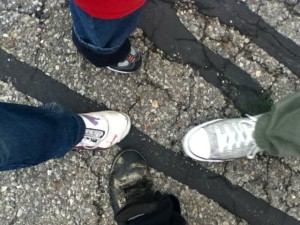 Some believe that teenagers – particularly those labelled as “trouble” – don’t want to be involved in community activities or mentoring relationships with adults. The evaluation busts that myth by demonstrating very clearly – that if organizations and communities take the right approach – then many adolescents and young adults, will participate in asset building activities like arts and sports. Many will also seek assistance for challenges they face with things like addictions, gang involvement or finding a job or a home, when they have developed a trusting relationship with an adult who meets them ‘where they’re at.’ The evaluation results also clearly demonstrated that when young people got involved in their communities and received help with life challenges, they experienced many positive benefits and changes. Over 95 % of youth agreed their involvement “helped them move in the direction in life they wanted to go.” For example, youth said:
Some believe that teenagers – particularly those labelled as “trouble” – don’t want to be involved in community activities or mentoring relationships with adults. The evaluation busts that myth by demonstrating very clearly – that if organizations and communities take the right approach – then many adolescents and young adults, will participate in asset building activities like arts and sports. Many will also seek assistance for challenges they face with things like addictions, gang involvement or finding a job or a home, when they have developed a trusting relationship with an adult who meets them ‘where they’re at.’ The evaluation results also clearly demonstrated that when young people got involved in their communities and received help with life challenges, they experienced many positive benefits and changes. Over 95 % of youth agreed their involvement “helped them move in the direction in life they wanted to go.” For example, youth said:
“they taught me to actually think before I acted…just keeping my cool overall and staying relaxed and not being so stressed out.”
“It helped me see the value of myself.”
Learning what it takes – with youth
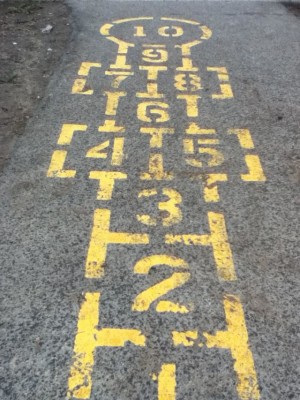 Sharing our Story describes key elements of the inREACH approach that was so successful. It took
Sharing our Story describes key elements of the inREACH approach that was so successful. It took
- the development of trusting relationships between staff and young people;
- listening to the youth and involving them in decision-making,
- recognizing youths’ strengths, skills, and interests, and
- making programs and services more accessible.
The evaluation report fleshes out some details of HOW to implement these approaches, which is the challenging part.
One illustration follows:
“I don’t think that they have ever had an adult say “what are your dreams?” and “how are you going to achieve those?” and then try to help them… That is my biggest question when I first meet a kid….it gets them thinking…. Then believing in them too and showing them you really care.” (Project staff)
Learning what it takes – the community’s role
inREACH was a collaborative venture of multiple organizations. The evaluation documents how these partnerships enabled organizations to work together more effectively, to work with youth in a different way, to access more services and resources and to “produce systemic change – changes in the way systems and organizations in the community approached the problem of gangs and at-risk youth.” (p 10)
Feedback to Community
It was important to report back to people who shared their thoughts and stories of involvement so I returned to many of the neighbourhood programs. Young people were keen to take the summary booklets and some were excited to see their own photographs featured there. Some youth who had been interviewed wanted the full 140 page version, partly to see if they were quoted there. There was a sense of pride for what they had created and accomplished and some commented on the huge difference the programs made in their lives.
 Continuing the Learning
Continuing the Learning
We know that if fewer adolescents and young adults experienced marginalization due to where they live or the challenges they face, then fewer young people would be attracted to gangs as a solution to their problems or to find a sense of belonging. So, it begs the question…. What should the community take forward from this youth gang prevention project?
There’s so much to talk about – outreach, social media, a youth engagement approach, new ways of collaborating across agencies, the role of neighbourhood community centres….
We look forward to working with our community to keep learning, but also move the learning to action. The upcoming event “Engaging marginalized youth” will help us do just that and you can join us on Friday April 11, 2014. Registration is required for the event and you can register here. [UPDATE: this event is now SOLD OUT. You can still register but you will be added to the wait list in case of cancelations.]
There’s always more to learn…
Photo Credits: all photos taken by inREACH youth during PhotoVoice projects. 2012
 In 2012, the KW Multicultural Centre, along with numerous community partners developed a series of workshops designed to help community members better understand hate crimes, learn how to recognize potential hate crimes, how to help victims and what to do in the event of witnessing an incident that might be a hate crime. The workshop materials were designed in a way that those who completed it could deliver the workshop to other groups. To date, more than 15 workshops have been conducted in our community with over 250 people taking the training. These and other efforts help to raise awareness about the importance of hate crime prevention.
In 2012, the KW Multicultural Centre, along with numerous community partners developed a series of workshops designed to help community members better understand hate crimes, learn how to recognize potential hate crimes, how to help victims and what to do in the event of witnessing an incident that might be a hate crime. The workshop materials were designed in a way that those who completed it could deliver the workshop to other groups. To date, more than 15 workshops have been conducted in our community with over 250 people taking the training. These and other efforts help to raise awareness about the importance of hate crime prevention.
 On Friday April 11th, the Waterloo Region Crime Prevention Council hosted “Engaging Marginalized Youth: Harnessing Experience from the InREACH Project” to provide a space for a diverse group of community members – individuals, agencies and neighbourhoods that were involved in the InREACH project – to begin moving from idea to action. Our community learned some very
On Friday April 11th, the Waterloo Region Crime Prevention Council hosted “Engaging Marginalized Youth: Harnessing Experience from the InREACH Project” to provide a space for a diverse group of community members – individuals, agencies and neighbourhoods that were involved in the InREACH project – to begin moving from idea to action. Our community learned some very 


 Author: Karl Garner I was a Case Manager at inREACH a focus on employment for the youth. I am currently working at
Author: Karl Garner I was a Case Manager at inREACH a focus on employment for the youth. I am currently working at  A big part of these two years was assisting the youth in opening a Youth Art Studio. This studio gave opportunities for at-risk youth to express themselves through the creative arts. It gave the youth a chance to engage in a new and healthy outlet to express their emotions, as well as cope with current and past adversities. I also assisted these youth in running their very first Art Show at a local gallery. Some sold their art, some made the paper; but more importantly I noticed a huge boost of confidence in each of the youth who took part in this.
A big part of these two years was assisting the youth in opening a Youth Art Studio. This studio gave opportunities for at-risk youth to express themselves through the creative arts. It gave the youth a chance to engage in a new and healthy outlet to express their emotions, as well as cope with current and past adversities. I also assisted these youth in running their very first Art Show at a local gallery. Some sold their art, some made the paper; but more importantly I noticed a huge boost of confidence in each of the youth who took part in this.


 Author: Paul Field
Author: Paul Field Author: Krista McCann
Author: Krista McCann The most important lessons and understandings learned from inREACH will inspire community action toward a future where all young people feel part of a caring community and have the opportunities and the supports they need and deserve. But, any evaluation isn’t even worth the paper it’s printed on if it just sits on a shelf. We need to apply the evaluation findings so that we can affirm what might already work but also make changes where needed.
The most important lessons and understandings learned from inREACH will inspire community action toward a future where all young people feel part of a caring community and have the opportunities and the supports they need and deserve. But, any evaluation isn’t even worth the paper it’s printed on if it just sits on a shelf. We need to apply the evaluation findings so that we can affirm what might already work but also make changes where needed. Some believe that teenagers – particularly those labelled as “trouble” – don’t want to be involved in community activities or mentoring relationships with adults. The evaluation busts that myth by demonstrating very clearly – that if organizations and communities take the right approach – then many adolescents and young adults, will participate in asset building activities like arts and sports. Many will also seek assistance for challenges they face with things like addictions, gang involvement or finding a job or a home, when they have developed a trusting relationship with an adult who meets them ‘where they’re at.’ The evaluation results also clearly demonstrated that when young people got involved in their communities and received help with life challenges, they experienced many positive benefits and changes. Over 95 % of youth agreed their involvement “helped them move in the direction in life they wanted to go.” For example, youth said:
Some believe that teenagers – particularly those labelled as “trouble” – don’t want to be involved in community activities or mentoring relationships with adults. The evaluation busts that myth by demonstrating very clearly – that if organizations and communities take the right approach – then many adolescents and young adults, will participate in asset building activities like arts and sports. Many will also seek assistance for challenges they face with things like addictions, gang involvement or finding a job or a home, when they have developed a trusting relationship with an adult who meets them ‘where they’re at.’ The evaluation results also clearly demonstrated that when young people got involved in their communities and received help with life challenges, they experienced many positive benefits and changes. Over 95 % of youth agreed their involvement “helped them move in the direction in life they wanted to go.” For example, youth said: Sharing our Story describes key elements of the inREACH approach that was so successful. It took
Sharing our Story describes key elements of the inREACH approach that was so successful. It took Continuing the Learning
Continuing the Learning